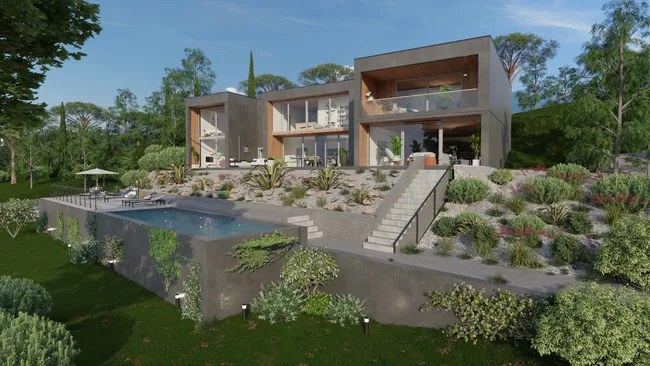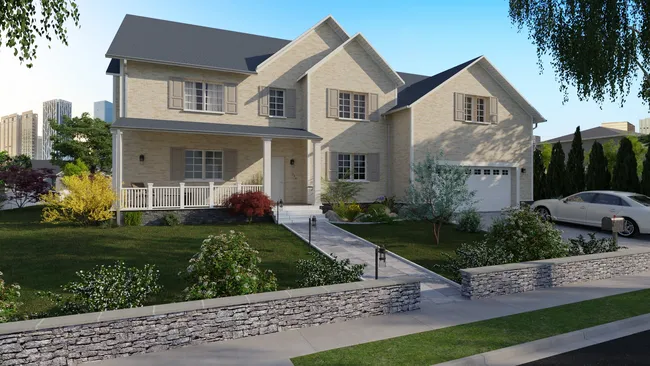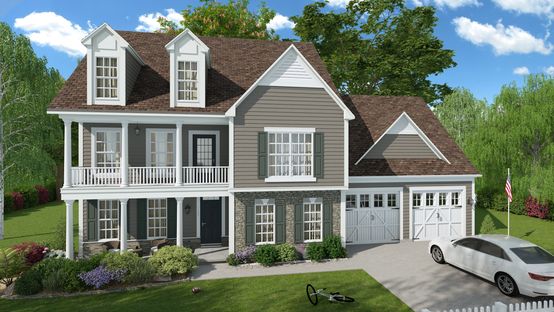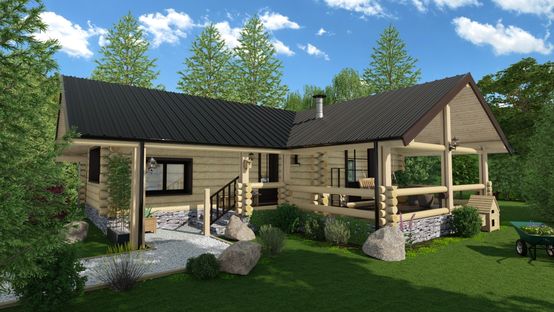What Is Construction Delivery?
What is construction delivery? Construction delivery is the way in which you complete a construction project for a client. There are many construction delivery methods, and each approach offers its own pros and cons.
Here are some of the most common methods of construction delivery:
- Design-Bid-Build (DBB)
- Design-Build (DB)
- Construction Management-at-Risk (CMAR)
- Construction Management Multi-Prime (CMMP)
- Public-Private Partnership (PPP or P3)
- Integrated Project Delivery (IPD)
Later in this article, we will examine each of these methods in much greater detail.
Many construction companies and contractors have to try multiple construction project delivery methods to find which method works best for their business, customers and capabilities.
Why Choosing the Right Construction Delivery Method Matters
Construction professionals know: There’s more than one way to build a house. In fact, you can use hundreds of approaches to put together four walls and a roof, but you will likely spend wildly different amounts of money to complete each method.
That’s why choosing the right construction delivery method matters. As a talented construction professional, you can build pretty much anything your customers throw your way. But it’s how you build it that will determine the ultimate level of satisfaction your customer has with your company and services.
For example, imagine you’re tasked with building a relatively simple split-level ranch-style home. The project budget is $400,000, and you find that you can build the home for well under budget at $200,000. You do it, and when you’re done, the customer is furious.
Why? Because they wanted the highest quality materials for each aspect of the home. But because you didn’t consult with them as part of your project delivery method, you didn’t understand that. Now, it’s too late to go back and change it, and you’re left with an unhappy customer.
It goes other ways, too. Perhaps you have decided to only do builds and not design — you ask your customers to work with third-party architects and designers to finalize their designs. But over and over, you find that you’re struggling to stay within budget or even achieve the design at hand because your customers are choosing architects who barely understand the basic principles of residential construction.


Construction Delivery Methods: A Comparison
Now, let’s get a little bit more specific about construction project delivery. While there are more methods than those we cover below, these are the most common and most effective project delivery methods used by construction professionals throughout the industry.
Design-Bid-Build (DBB)
This is considered the most common method of construction delivery, and there’s a good reason for that: It works. To do the DBB method, you break the entire construction process down into three key categories: designing, bidding and building.
While this is far from the fastest method of construction delivery, it is perhaps the method that involves the most communication and collaboration with clients. And that tends to lead to better outcomes.
The process begins with the design phase. In this phase, the customer hires a designer of some kind — often an architect but sometimes a construction firm that offers design services. The designer prepares construction drawings and specifications, seeking feedback throughout the design process from both the client and the team that will ultimately build the structure.
When the design is finalized, the project opens up for bids, which signals the second phase. If you run a construction company and weren’t already involved during the design phase, this is the point at which you might encounter a project for the first time.
General contractors review the construction documents and coordinate with potential subcontractors. They ask questions about the design and project to make sure they fully understand what will be required, and then they make their bids. The designer and client review the bids and choose the best in terms of price, capabilities, track record and other factors.
That’s when the build phase starts. The chosen construction company should start the construction process right away to ensure the project is delivered on time. Throughout the construction process, the designer checks in to make sure the construction is reflective of what the client asked for during the design phase.
Design-Build (DB)
If yours is a construction company that can accommodate both the design phase and the construction phase, you may want to consider DB as your primary construction delivery method. That’s because this method can save a lot of time and keep more of the property owner’s investment in your pocket instead of the pockets of a separate company.
In the DB process, you are the only point of contact for the customer. That remains true throughout the project, from initial design discussions to final review of the structure. That means you have much more control over the end product, and while that is generally a benefit to you, it also means you are fully accountable for the results.
The DB process begins somewhat differently than the DBB process. The property owner puts together a description and rough outline of what they want built, and then they ask for proposals from design-build companies. These proposals replace the bid phase in the DBB process. They include initial plans for the building, as well as information about project scope, deliverables and pricing.
The owner then selects the best proposal based on their budget, preferences and needs. From there, the selected contractor oversees every aspect of construction, from securing permits to final construction review.
Construction Management-at-Risk (CMAR)
The CMAR method is popular among owners who don’t want to deal too heavily with the construction and design processes but still want to ensure that their project meets their expectations and budget.
Here’s how it works: The owner hires a construction manager. The construction manager and owner discuss the owner’s vision for the project, and the construction manager takes that and runs with it. They then find and hire a designer, coordinating with the designer on behalf of the owner to make sure the design fits the project specifications.
Once the construction manager is happy with the design, they provide a maximum budget figure to the owner. This figure is important because it acts as a guarantee. The construction manager is guaranteeing that the project will not exceed the price they are quoting to the owner. If it does, the construction manager has to be responsible for the difference. On the other hand, if the project comes in under budget, the construction manager may be rewarded with part of the money saved.
The owner approves the maximum budget figure, and then the construction manager proceeds with the bidding process. They choose the best bid based on the bidder’s capabilities, track record and ability to meet the project specifications within budget. Then, the construction manager oversees the construction of the project from start to finish, ensuring that every aspect of the project meets the expectations of the owner. This is in contrast with the DBB construction delivery method, in which a designer oversees the construction process.
Construction Management Multi-Prime (CMMP)
Some owners want to have more control over the construction of their homes or commercial buildings. If they have plenty of construction and management experience, then the CMMP project delivery method may be ideal for them.
That’s because this method enables the owner to find and hire all subcontractors, effectively replacing the general contractor. As you can imagine, this method requires quite a bit more footwork on the part of the owner than many other construction delivery methods, but for some owners — particularly those with a background in construction and project management — CMMP is ideal.
Every part from the designer to the drywall installer is a subcontractor the owner finds, vets and hires. The owner pays each subcontractor directly for services rendered and is ultimately responsible for inspecting and approving the work completed.
The advantages and disadvantages of this construction project delivery method come down in large part to the owner’s own project management skills, but some advantages that nearly always apply are the increased level of control and, for the involved subcontractors, faster payments.
Public-Private Partnership (PPP or P3)
PPP projects are reserved for construction projects that involve both a private and public entity. In the case of a private construction company, a PPP project might be a job to build affordable housing in partnership with a municipality or state government.
The private companies involved in these projects bring to the table their processes, efficiencies and expertise, while the public entities typically bring the funding and the vision for the project, as well as the research supporting the need for the project.
Because of the involvement of the public entity, the risk of non-payment or severely delayed payment is much lower for P3 projects than it is for all other kinds of projects except completely public projects. The owner of the project remains the same throughout the process, and the general public is generally in favor of the project — a sentiment often signaled through a vote or survey.
These projects, while rare, are highly desirable for many construction companies because they are so steady and straightforward. However, keep in mind that public entities — and, by extension, the projects they fund — are subject to strict regulations regarding wages and various other uses of public funds. That may complicate certain aspects of any PPP project, but as a general rule, these projects are typically simple and straightforward.
Integrated Project Delivery (IPD)
When people work together, great things can happen. That’s the foundational principle behind IPD as a construction delivery method. That’s because this is the only recognized method that puts every party involved in a construction project on a single contract.
Before design ever even begins, each contractor is hand-selected and added to a single contract. When all parties have contractually agreed to complete the project as a whole, they then begin to collaborate on every stage of the project, including the design.
The results can be impressive. That’s often because subcontractors and others not typically involved in various stages of the process can offer insights that other stakeholders might not have considered in another project delivery model.
In any case, the collaboration these kinds of projects can foster can lead to impressive projects with equally impressive delivery timelines and budgets.


Factors to Consider Before Selecting a Construction Delivery Method
Choosing between the various construction delivery methods shouldn’t be done haphazardly. In fact, you need to give this choice a lot of thought. That’s because your chosen construction project delivery method can have as much of an impact on the final outcome as the tools and equipment you choose — if not more of an impact.
With that in mind, here are the factors to consider before you select your construction delivery method:
1. Design
How will the final project look? Do you already have a vision for it, or do you need the input of an outside architect or designer? A design-build method may work best if you have a specific vision for the project and run a construction company that can offer design services. If that is not the case, then you may want to go with design-bid-build or even get a construction manager involved in the overall process.
2. Budget
Each approach to construction project delivery will have a different impact on the final budget. For example, if you go with the DBB approach, the designer will likely select the lowest bid that can still reasonably meet project requirements. That can have a big money-saving impact on the project as a whole.
Similarly, when you opt for the CMAR construction delivery method, the construction manager is incentivized to save on the budget because they usually receive a bonus of some kind for coming in well under the expected project maximum.
On the other end of the spectrum, of course, are projects with large budgets and very high quality expectations. For those projects, budget considerations may be much less important, and you may need to consider the project delivery method that is most likely to deliver a flawless end result.
3. Risks
Construction projects are risky business. That’s because they often deal with millions of dollars in project budgets, expectations, materials, labor, equipment and tools. When something goes wrong, millions of dollars may be on the line — and that’s not to mention the high cost of potential liability when a worker or someone else gets hurt during the course of a construction project.
Whose shoulders will those risks fall on? When you choose a construction delivery method, you are essentially deciding who is going to be responsible when things go wrong. The CMAR method, for example, places full responsibility on the construction manager. Meanwhile, the more traditional DBB approach places much of the responsibility on the architect or designer, while the DB method places design-build construction firms squarely in charge of the liability and responsibility for the project.
4. Schedule
How quickly does this project need to be completed? If you have a long project timeline, which is often the case with PPP projects, you may need to place less of a premium on this consideration. However, if you have a tight turnaround on your hands, you will need to closely examine each of the construction delivery methods to determine which will deliver a high-quality project in a timely manner.
DBB, for example, can add time because of the somewhat lengthy bidding and bid selection processes. On the other hand, rounding up all of the involved parties before design can begin — as is the case with the IPD approach — can lead to significantly delayed project start times.
5. Owner Expertise
Does the project owner know construction inside and out? Or are they completely new to the field and in need of some significant hand-holding?
If they’re a seasoned construction expert, they may opt for the CMMP delivery method, in which they will essentially act as the general contractor and assemble and manage the team of subcontractors.
If they don’t have any expertise in construction whatsoever, the CMAR, DBB or DB approaches may be ideal. In each of these, someone else — whether it is a construction manager, designer or design-build firm — is in charge of overseeing the project details and keeping the owner informed.
How to Choose the Best Construction Delivery Method
After considering all of the factors described above, you should have a fairly clear picture of which construction delivery methods are likely to work for the project at hand. But you may still have two or more potentially viable methods to choose from. In such a case, how should you make your decision?
Ultimately, it’s up to you. But it may be helpful to follow a traditional decision-making process on paper with all of the stakeholders involved in this decision.
Begin with the construction delivery methods you haven’t yet ruled out. Write them down. Then, rank each of the primary considerations for a construction project in order of importance. Common considerations you may want to rank include things like project cost, design expertise required, expected timeline and overall project complexity.
After speaking with the client, you should have a decent idea of which of those factors are likely to matter most on the client side. Then, ask yourself how you would rank those factors internally. Combine those rankings to rank every primary project consideration in order of total importance to the project.
Apply each of the ranked considerations to what you know about the project delivery methods you are considering. For example, if budget is your number one consideration for the project, the choice between DBB and DB may become more clear because DBB involves a bidding process that allows you to prioritize a lower total project cost.
Meanwhile, if the project is unbelievably complex and far beyond your own capabilities to manage, then project complexity may be your top consideration. Such a situation might warrant the CMAR approach in which a construction manager is involved in overseeing every aspect of the project so you don’t have to be.
Repeat this ranking and assessment process for each of the project delivery methods you are considering and assign each a total score based on how they perform against the ranked considerations. At the end of the process, you will likely have a clear winner, and that is the method you will want to choose.
Keep in mind, however, that this process isn’t perfect. Particularly if you are a new construction company or an owner who has never done this before, some trial and error may be involved. That is OK, and it shouldn’t deter you from making the choice in general. It should just tell you that you have a lot of work and development ahead of you.
What Delivery Method Is Best for Your Construction Project?
All of the construction delivery methods we have discussed in this article have their advantages and disadvantages. While some are better suited for certain projects than others, there often is no wrong answer. There are just better answers and worse answers.
That means that, over time, your choice of project delivery method will become more finely tuned and intuitive, helping you advance your business and boost your reputation in the construction industry.



